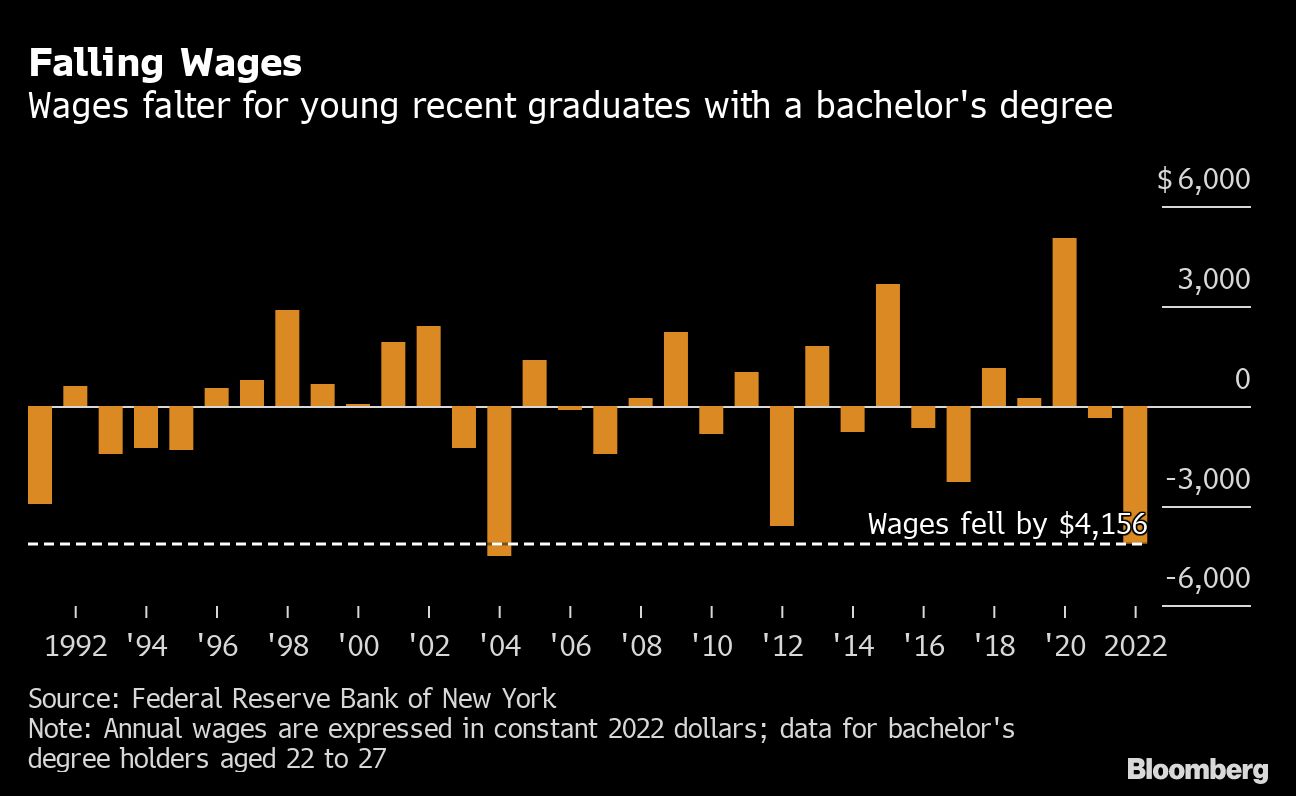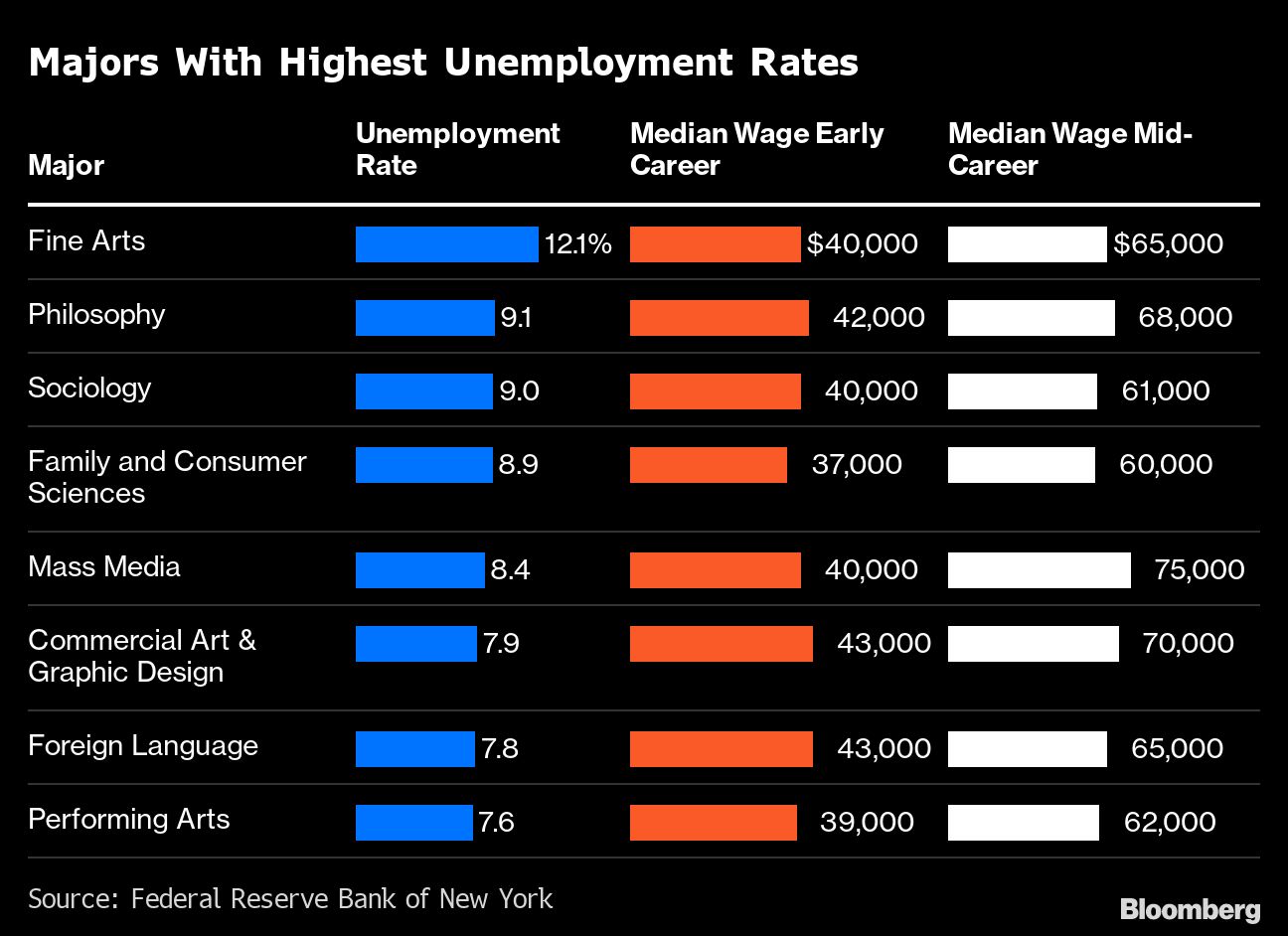When it comes to wages, fortunes flipped last year for college and high-school graduates.
In 2022, median annual pay was $52,000 for Americans with a bachelor’s degree, according to data released by the New York Federal Reserve Friday. That’s a 7.4% decline in inflation-adjusted terms — the steepest plunge since 2004, erasing nearly all of the pandemic-era gains. It was sharpest for those earning the most.

Meanwhile, wages accelerated 6% in real terms to $34,320 for those with only a high-school diploma — the biggest gain in more than two decades.
While secondary-degree holders are still paid more, those who didn’t attend college are catching up. Americans with only a high school diploma made 93% of what recent graduates with a bachelor’s degree in the bottom quarter of wages made. The ratio is up from 79% in 2021, and it’s back at the levels seen in 2019 when tight labor markets were boosting pay at the the lower end of the spectrum.
The data underscore the demand for service-sector workers and those in segments of the economy where technical skills are more important than a college degree, such as plumbing and electrical work. It also shows the eroding value of an expensive bachelor’s degree as more Americans get one, increasing competition in that part of the labor market.

Since December 2020, wages have grown more rapidly for high school-only workers, according to the data that tracks median wages for those aged 22 to 27 who are working full-time. That’s a flip from the dynamics over the past 20 years, according to the Atlanta Fed Wage Tracker.
Recent graduates are still able to find work pretty quickly, with an unemployment rate of 4.1% in December. That compares with 3.9% in March 2020.
Not surprisingly, unemployment rates vary by college major. Nursing and education graduates experienced an unemployment rate below 2% as the industry desperately seeks to restaff after the pandemic exodus of workers. In fields such as philosophy, the rate exceeds 9%.
This article was provided by Bloomberg News.








